SLUSDE1D November 2018 – February 2021 UCC21540 , UCC21540A , UCC21541 , UCC21542
PRODMIX
- 1 Features
- 2 Applications
- 3 Description
- 4 Revision History
- 5 Device Comparison Table
- 6 Pin Configuration and Functions
-
7 Specifications
- 7.1 Absolute Maximum Ratings
- 7.2 ESD Ratings
- 7.3 Recommended Operating Conditions
- 7.4 Thermal Information
- 7.5 Power Ratings
- 7.6 Insulation Specifications
- 7.7 Safety-Related Certifications
- 7.8 Safety-Limiting Values
- 7.9 Electrical Characteristics
- 7.10 Switching Characteristics
- 7.11 Insulation Characteristics Curves
- 7.12 Typical Characteristics
- 8 Parameter Measurement Information
- 9 Detailed Description
-
10Application and Implementation
- 10.1 Application Information
- 10.2
Typical Application
- 10.2.1 Design Requirements
- 10.2.2
Detailed Design Procedure
- 10.2.2.1 Designing INA/INB Input Filter
- 10.2.2.2 Select Dead Time Resistor and Capacitor
- 10.2.2.3 Select External Bootstrap Diode and its Series Resistor
- 10.2.2.4 Gate Driver Output Resistor
- 10.2.2.5 Gate to Source Resistor Selection
- 10.2.2.6 Estimating Gate Driver Power Loss
- 10.2.2.7 Estimating Junction Temperature
- 10.2.2.8 Selecting VCCI, VDDA/B Capacitor
- 10.2.2.9 Application Circuits with Output Stage Negative Bias
- 10.2.3 Application Curves
- 11Power Supply Recommendations
- 12Layout
- 13Device and Documentation Support
- 14Mechanical, Packaging, and Orderable Information
Package Options
Refer to the PDF data sheet for device specific package drawings
Mechanical Data (Package|Pins)
- DWK|14
- DW|16
Thermal pad, mechanical data (Package|Pins)
- DW|16
Orderable Information
12.2 Layout Example
Figure 12-1 shows a 2-layer PCB layout example with the signals and key components labeled for the SOIC-14 DW package, which has Pin 12 and Pin 13 removed. For more detailed information, please refer to the UCC21540EVM design - "Using the UCC21540EVM - TI"
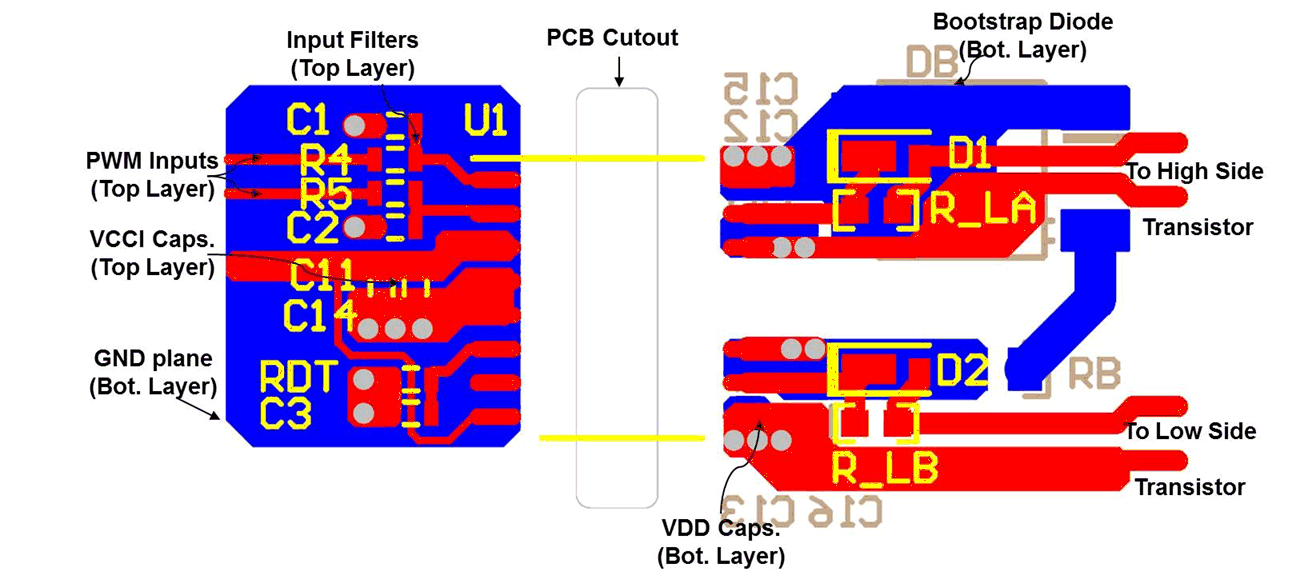 Figure 12-1 Layout Example
Figure 12-1 Layout ExampleFigure 12-2 and Figure 12-3 shows top and bottom layer traces and copper.
There are no PCB traces or copper between the primary and secondary side, which ensures isolation performance.
PCB traces between the high-side and low-side gate drivers in the output stage are increased to maximize the creepage distance for high-voltage operation, which will also minimize cross-talk between the switching node VSSA (SW), where high dv/dt may exist, and the low-side gate drive due to the parasitic capacitance coupling.
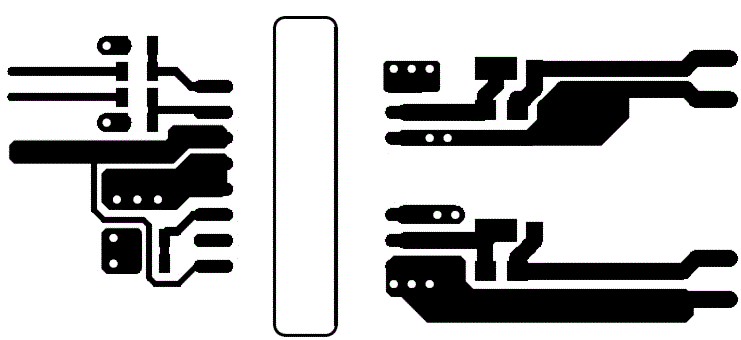 Figure 12-2 Top Layer Traces and Copper
Figure 12-2 Top Layer Traces and Copper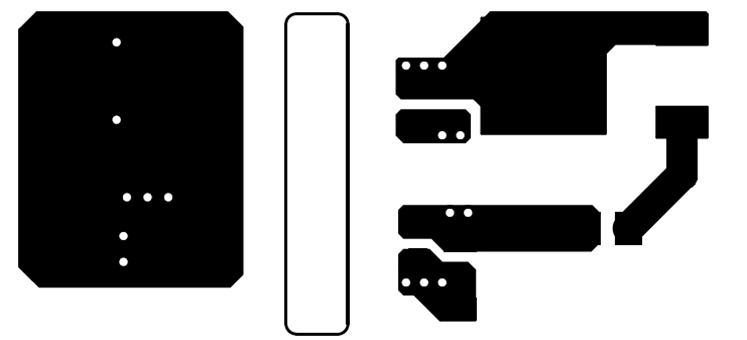 Figure 12-3 Bottom Layer Traces and Copper (Flipped)
Figure 12-3 Bottom Layer Traces and Copper (Flipped)Figure 12-4 and Figure 12-5 are 3-D layout pictures with top view and bottom views.
The location of the PCB cutout between the primary side and secondary sides, which ensures isolation performance.
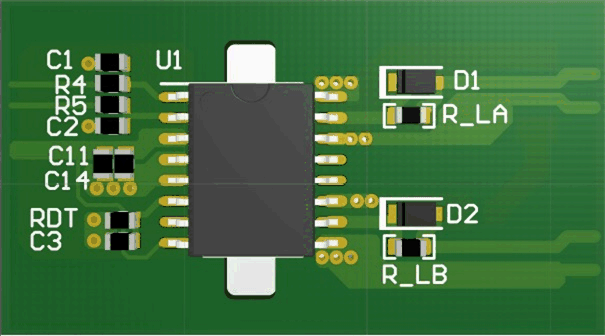 Figure 12-4 3-D PCB Top View
Figure 12-4 3-D PCB Top View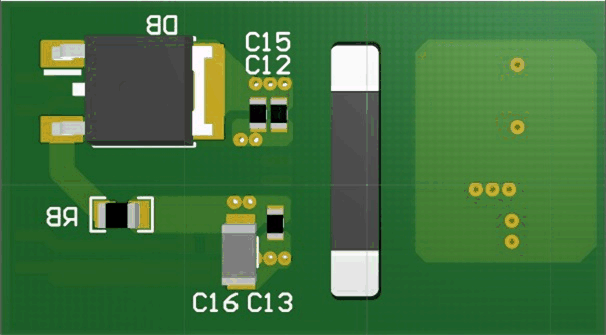 Figure 12-5 3-D PCB Bottom View
Figure 12-5 3-D PCB Bottom View